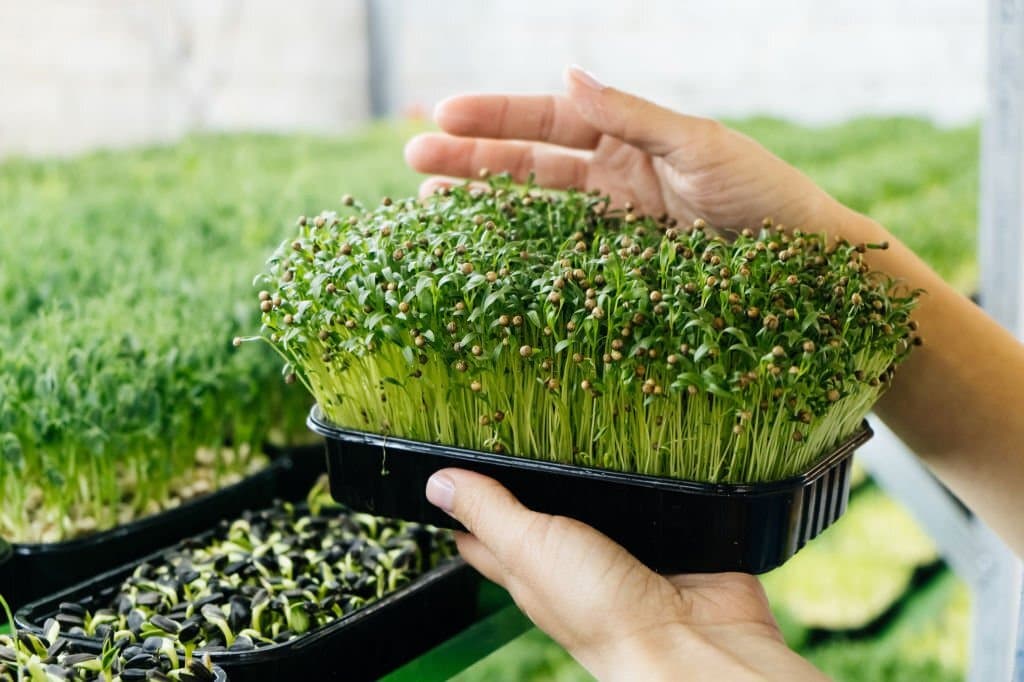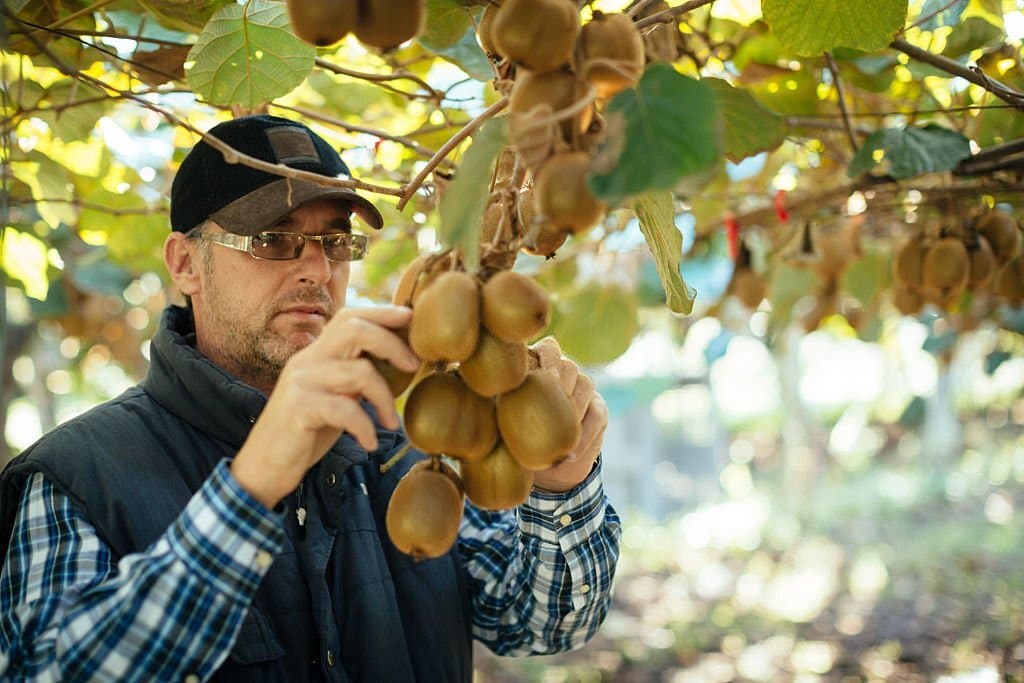If you want to start a successful garden, you have definitely come across vertical farming as a great and viable option. Vertical farming is a reliable and sustainable way to grow your crops outdoors, indoors, or in a greenhouse.
Growing your crops allows you to control what goes in them and gives you access to homegrown food. You get to source your food directly from your garden and enjoy the fruits of your labor.
Investing in vertical farming will give you the best results and allow you to enjoy the journey of growing your home garden. This post will look at vertical farming and cover the different types of crops great for vertical farming. Let’s dive in.
What is Vertical Farming?
Vertical farming is the process of growing crops vertically to save on space and embrace innovative ideas. It features vertical structures and layers that hold different crops for them to thrive.
The advantages of agriculture and vertical farming show that you can grow your garden wherever you are. Having limited space and no backyard should not hinder you from nurturing a garden you’ll be proud of.
Vertical farming allows you to implement innovative ways of farming like soilless growing techniques that feature growing your plants in water. Therefore, technological advancements enable you to create an indoor or outdoor garden that will thrive and give you all-year-round produce.
Your vertical garden will support different crops and allow you to include various options in your garden. Vertical farming applies to edible and decorative plants, depending on your gardening goals.
Types of Crops For Vertical Farming
If you want to start a vertical garden that will give you excellent food produce, you should remember that not all crops will thrive. Therefore, it is essential to continuously invest in suitable crops to ensure that your vertical farming efforts are fruitful. The types of crops that do well for vertical farming include;
1. Kales

Kales come in different types, including Tuscan, Winter Boar, and Dinosaur, incredible options for your vertical garden. In addition, kales require minimum exposure to the sun by incorporating some shade. This makes them a great choice when embracing vertical farming.
Kales are easy to grow, and you can place them under other sun-loving plants, and they will continue to thrive and give you great produce. When harvesting, ensure that you take better care of them to provide a bountiful harvest.
Other greens also do well in a vertical farm and can be a great addition to your crops list. Some of the best greens suitable for vertical farming include lettuce and basil. You can use hanging pots, shelves, or vertical planters made from pallets to grow your greens.
2. Tomatoes

Tomatoes are incredible crops to consider for your vertical garden. They are easy to cultivate, and they thrive under different conditions. However, your tomatoes will need the training to grow up depending on a support system.
A support system like a cage or trellis will allow the tomato vines to grow and thrive in your vertical garden, saving you space. Additionally, growing your tomatoes vertically saves you the stress of dealing with different diseases.
3. Cucumbers

Cucumbers are lightweight and will easily grow in a vertical farming setting. Given their lightweight, they are easy to support when using a trellis without worrying that they won’t turn out as expected.
The best part is that since they are grown vertically, the shape of your cucumbers will stay straight without distortion. You can also include other family members of the cucumber, like zucchini and summer squash, in your vertical garden.
4. Peas

Peas require minimal upkeep to thrive, making them a great crop option to consider when investing in a vertical garden. Therefore, watering and feeding your peas with fertilizer is done sparingly since they can hold on to nutrients and water for a long time.
However, it is essential to note that you’ll need to provide a support system like a trellis or a pole with the peas. These climbing plants will require support to thrive and give you your desired results.
5. Green Beans

When choosing green beans to add to your vertical garden, ensure that you invest in the pole variety. These green beans work well in a vertical farming system since they can climb up trellises.
Green beans don’t require too much sun exposure making them a great choice when using space that features some shade. In addition, your green beans will grow in plenty and give you a consistent supply for a few months, making it an excellent investment.
6. Passion Fruits

If you are looking for fruit options to add to your vertical garden, passion fruits are an incredible option to consider. Passion fruits require a bit of work for you to keep up with them, but they are a great option that will thrive in a vertical farming setting.
You’ll need to prune your passion fruits regularly to help encourage healthier fruit development. This means you’ll need to invest some time if you choose to have passion fruits in your vertical garden.
Remember that for passion fruits to thrive; they’ll need to be grown in warm weather. Therefore, ensure that you provide the optimal conditions for your passion fruits to grow. Additionally, take note that passion fruits can grow wildly and take over your garden if you don’t consistently take the time to cater to them.
7. Mint

Mint is a great natural herb plant that can easily grow outside your balcony or inside your house. It is the best crop for beginners starting in vertical farming to get a feel of growing their food. They are easy to cultivate and do not require much effort to take care of them.
Having mint in your vertical garden means you’ll enjoy your produce quickly since it doesn’t take much time to grow. Additionally, harvesting your mint will be easy and quick without interfering with the crop too much.
8. Sunflowers

If you want to add some color to your vertical garden, including sunflowers is an excellent investment. They naturally grow vertically and do not need trellises or poles to support their growth. Adding some sunflowers will bring more vibrant color to your garden and add diversity.
9. Kiwi.

Kiwifruit, or Chinese gooseberry is the edible berry of several species of woody vines in the genus Actinidia. The most common cultivar group of kiwifruit is oval, about the size of a large hen’s egg. It has a fibrous, dull greenish-brown skin and bright green or golden flesh with rows of small, black, edible seeds. The fruit has a soft texture and a sweet but unique flavor.
Kiwifruit is native to north-central and eastern China. Cultivation of the fuzzy kiwifruit spread from China in the early 20th century to New Zealand, where the cultivars Actinidia deliciosa and A. chinensis were developed. It was later introduced to other countries like Italy, Chile, Greece, and France.
10. Melons.

They come in all shapes and sizes, from the tiniest watermelons to the largest honeydews. And while they may all look different on the outside, they have one thing in common: they’re all perfect for vertical farming.
Why are melons so well-suited to vertical farming? For one thing, they’re relatively lightweight. This means that they don’t put too much strain on the supports that hold them up, whether it’s a trellis or a series of shelves.
They’re also relatively easy to grow. Melons don’t require a lot of attention or care, and they can even tolerate some crowding. This makes them ideal for vertical farms, where space is often at a premium.
Finally, melons are delicious! There’s nothing like biting into a juicy watermelon on a hot summer day, and with vertical farming, you can enjoy that sweetness all year round.
11. Brussels sprouts.

Vertical farming is a type of agriculture where crops are grown in vertically stacked layers in a controlled environment. This type of farming allows for year-round production, eliminates the need for pesticides, and uses less water and land than traditional farming methods.
Brussels sprouts are a great crop for vertical farming because they are small and compact, making them easy to grow in a vertical system. They are also a cool-weather crop, so they can be grown year-round in a controlled environment. Brussels sprouts are a nutritious vegetable that is high in fiber and vitamins C and K.
FAQs
Why is lettuce good for vertical farming?
Lettuce is an ideal crop for vertical farming for several reasons. First, it has a relatively short growing cycle, so it can be produced year-round in controlled environments. Second, lettuce is a low-maintenance crop that does not require a lot of water or fertilizer to produce high yields. Finally, lettuce grows well in close proximity to other plants, so it is ideal for densely-packed vertical farms.
Can rice be grown in vertical farms?
The answer is yes, rice can be grown in vertical farms. In fact, rice is one of the crops that is often grown in vertical farms. The main reason why rice can be grown in vertical farms is because vertical farming allows for a more controlled environment, which is ideal for growing crops like rice. Additionally, vertical farming can also help to conserve water and space, both of which are important for growing rice.
Which countries use vertical farming?
The Netherlands, Belgium, Japan, and the United States are just a few of the countries that have been using vertical farming to grow crops indoors. This type of farming is becoming more popular as it requires less land and water than traditional farming methods.
Additionally, vertical farming can be used to grow crops year-round, even in places with extreme weather conditions. With the continued development of technology, it is likely that vertical farming will become more widespread in the coming years.
How fast is vertical farming growing?
The market for vertical farming is expected to grow at a compound annual growth rate of 24.8% from 2020 to 2027, according to a report by MarketsandMarkets. The report cites the increasing demand for fresh and organic food, as well as the need to reduce the carbon footprint of agriculture, as key drivers of this growth.
Which crop is best for vertical farming?
The answer may depend on the specific application or need. Crops that are well suited for vertical farming include leafy greens, herbs, and small fruits and vegetables. Each type of crop has its own unique requirements in terms of light, water, and nutrients.

